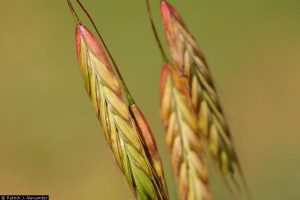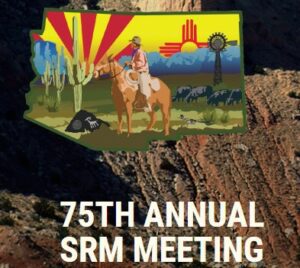Restoration
Workshop recordings.
Description: The workshop aims to bring together experts working in seed-based restoration around the world to discuss key elements of the native seed supply chain. This event is organized in conjunction with INSR, BLM, SER, TNC, and with assistance from the Great Basin Fire Science Exchange.
This workshop has been approved for continuing education credits through the Society for Ecological Restoration.
Webinar join links and recordings.
The SCIENCE X webinar series brings together scientists and land management experts from across U.S. Forest Service research stations and beyond to explore the latest science and best practices for addressing large natural resource challenges across the country.
View article.
Here, we distill insights from an assessment of the Collaborative Forest Landscape Restoration Program (CFLRP) projects and other collaborative governance regimes (CGRs). We asked (1) how do CGRs adapt to disruptions? and (2) what barriers constrained CGR resilience? Our analysis is informed by a synthesis of the literature, case examples and exemplars from focus groups, and a national CFLRP survey.
The Basic Identification of Grasses two-day short course covers the unique taxonomy of about 50 different grasses and grass-like plant genera. This class is for beginner through intermediate agrostologists and will include basic terminology, dissection, and use of a dichotomous key for identification. You will also learn how to collect and press grasses for future reference or for the purpose of mailing to others for identification/verification. The class may be taken for 1 unit of optional credit at the University of Nevada, Reno (UNR).
When: Class will be March 14-15 OR 16-17, 2022
Where: 300G of Fleischman Agriculture, University of Nevada, Reno
How: Sign up by contacting the instructor, Arnold (Jerry) Tiehm | Atiehm@att.net | 775-742-9180. Be sure to include your preferred class date and indicate whether or not you want to receive class credit.
Cost: $ 150 for non-students, $ 80 for students. Bring cash or check (made to Board of Regents) to the first day of class.
Details: Class will be 8 am -5 pm with a one-hour lunch break. Tea and coffee will be provided.
View article.
Using two designed experiments from a central Oregon juniper woodland, we resampled slash piles and skid trails 8 years after seeding. Our objectives were to assess the long-term vegetation response to conifer removal, ground disturbance, and seeding source (cultivar and local) in slash piles and skid trails. We found that seeded species persisted in the long term, but abundance patterns depended on the species, seed source, and the type of disturbance. In general, there were more robust patterns of persistence after pile burning compared to skid trails. Seeding also suppressed exotic grass cover in the long term, particularly for the local seed source. However, the invasion levels we report are still problematic and may have impacts on biodiversity, forage and fire behavior. Our short-term results were not predictive of longer-term outcomes, but short- and long-term patterns were somewhat predictable based on species life history traits and ecological succession. The use of a mix of species with different life history traits may contribute to seeding success in terms of exotic grass suppression. Lastly, our results suggest that locally adapted seed sources may perform as well or better compared to cultivars. However, more aggressive weed treatments before and after conifer removal activities and wider seeding application may be needed to effectively treat exotic grass populations.
View article.
Seeded native and introduced bunchgrasses both increased bunchgrass abundance and cover, even though precipitation was below average the first year post-seeding. Seeding introduced wheatgrasses, however, increased bunchgrass cover and abundance more than seeding native bunchgrasses. Seeding introduced wheatgrasses also limited exotic annual grass abundance and cover, but seeding locally sourced native bunchgrasses did not. Native bunchgrasses are slow growing, thus may limit exotic annual grasses in time. Alternatively, additional treatments, such as exotic annual grass control, may be needed to improve their success. The establishment of seeded native bunchgrasses in Wyoming big sagebrush in a below-average precipitation year is a promising result and suggests further research to improve seeded native vegetation success is warranted. The greater establishment of introduced wheatgrasses and their ability to limit exotic annual grasses suggests that successful introduced species may serve as a model for guiding trait selection in native species.
Webinar recordings.
Monday, October 25: Assessing our Future Forests
Resources Planning Act (RPA) Assessment: informing forest and grassland management, planning, and regional assessment, presented by Jennifer Costanza
Vulnerability assessment tools for setting priorities and identifying management targets, presented by Megan Friggens
Identifying climate change vulnerabilities and adaptation options for western U.S. national forests, presented by Jessica Halofsky and David L. Peterson
Tuesday, October 26: Adapting to Future Conditions
The Wildlife Adaptation Menu: a new tool for wildlife managers, presented by Stephen Handler
Climate adaptive silviculture in an urban floodplain forest, presented by Leslie Brandt
The role of climate and landscape change context in shaping forest dynamics, presented by Kristen Emmett
Wednesday, October 27: Modeling Tools for Management
Vegetation shifts with climate change: Applying the MC2 model, presented by John Kim
Incorporating future forest dynamics under climate change into landscape restoration planning: An application to the Central Sierras, presented by Nick Povak, Patricia Manley, Kristen Wilson
TACCIMO/FAMOUS – Connecting forest planning and operation with climate change challenges in the 21st Century, presented by Kelsey Bakken
Thursday, October 28: Management and Planning Tools
Web-based tools for determining seed sources for reforestation and restoration for current and future climates, presented by Brad St. Clair
The California seed zone map and post-fire reforestation in a warmer future, presented by Jessica Wright
PhenoMap: Providing timely rangeland vegetation assessments in a changing climate, presented by Jacqueline Ott, Charlie Schrader-Patton, Nancy Grulke
Friday, October 29: Shifting Life
Desired regeneration through assisted migration, presented by Dustin Bronson
Projected changes to an Arizona Sky Island are a harbinger of climate-fire effects on other western forests, presented by Kit O’Connor
Silvicultural strategies to improve post-fire reforestation success under climate change, presented by Chris Looney
Webinar recording.
In 2020, the Wyoming Game and Fish Department (WGFD) partnered with the Wildlife Conservation Society (WCS) on a North Central CASC supported project designed to help the agency incorporate climate change into their Statewide Habitat Plan (SHP) that was slated for an update that year. WGFD and WCS worked together to develop and apply a process for incorporating climate change into the SHP, which included a participatory workshop, a post-workshop Information Needs Survey, and regular meetings throughout the year to translate findings from the workshop and survey into the updated SHP.
As a result of this project, climate change was more extensively incorporated into the 2020 SHP relative to the previous version of the plan (completed in 2015). This included discussing climate change as a threat to achieving habitat protection and restoration for river, riparian and wetland habitats, as well as incorporating climate-informed management strategies and actions. The updated SHP also included climate change within the agency’s scoring system for allocating funding to habitat management projects. In addition to informing the SHP, the project also helped WGFD identify management-relevant climate-related information needs that are considered highly useful to WGFD staff and their management efforts. This project offers a useful model to other agencies that are interested in incorporating climate change into management plans, and to scientists and agencies looking to identify priority research needs related to climate change.
Webinar recording.
In the past 5 years of implementing the National Seed Strategy, the scientific knowledge gained has worked to reduce erosion, reduce the spread of non-native invasive plants and promoted productivity and biodiversity of plant and animal communities. Through increased coordination and communication between the private and public sector, the pace and scale of restoration will be accelerated. This presentation will describe the National Seed Strategy and present the 2015-2020 Progress Report, including highlighting USGS science that has been instrumental in meeting The Seed Strategy’s vision of getting the right seed in the right place at the right time.
Meeting website.
Join us in the heart of New Mexico for the 75th Annual SRM Meeting. The beautiful high desert rangelands, diverse cultures, authentic art, and painted skies of Albuquerque will make for a great meeting.






